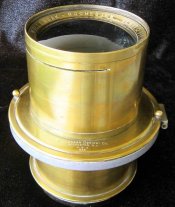In the book "vie camera techniques" by Leslie Stroebel (p110, figure 5.34), there's a mention of out of focus images in bright lights produce in focus images of diaphragm opening (I suppose it could be bohke).
I have an old barrel lens with no diaphragm, so I will make some waterhouse stops sometimes soon. Instead of making them as a perfect circle, I am thinking of cuting the hole as other geometries (stars, heart, moon crescent...) for experimental bohke. This may influence sharpness, but I contact print 8x10, so its not so important.
Anybody tried this? Any thoughts of possible results?
I have an old barrel lens with no diaphragm, so I will make some waterhouse stops sometimes soon. Instead of making them as a perfect circle, I am thinking of cuting the hole as other geometries (stars, heart, moon crescent...) for experimental bohke. This may influence sharpness, but I contact print 8x10, so its not so important.
Anybody tried this? Any thoughts of possible results?














